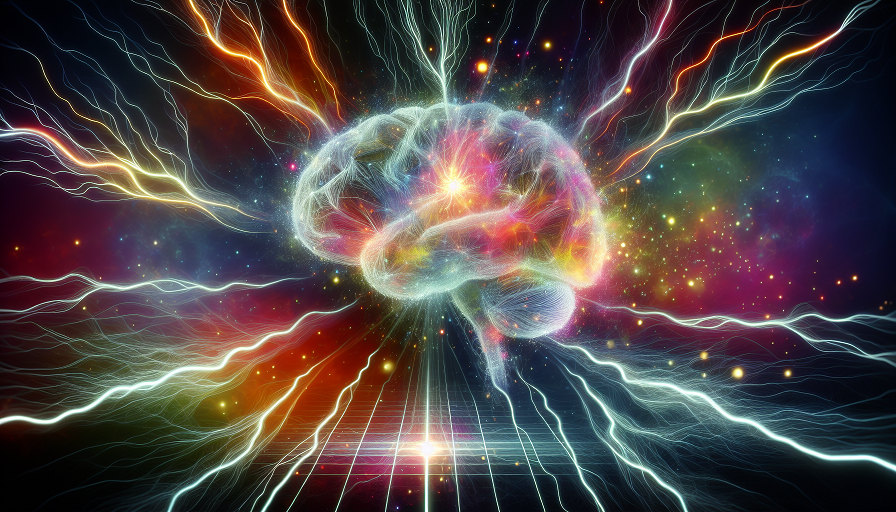
Picture someone deep in thought. Eyes unfocused. Staring into the middle distance. Maybe blinking slowly. It’s a familiar posture—the “thinking look.” But is it just a social cue, or does looking inward actually change how we see the world? Can introspection alter visual processing, attention, or perception?
As it turns out, introspection isn’t just an abstract concept—it has tangible effects on the brain and body, including the way we process visual information. When the mind turns inward, the eyes, brain, and attention systems subtly shift focus. This internal redirection might even change the way we literally see.
Contents
- What Happens When You Look Inward?
- How Introspection Affects Eye Behavior
- The Neural Tug-of-War: External vs. Internal Attention
- “Looking Without Seeing”
- Can Introspection Improve Visual Processing?
- The “Inward Gaze” and Meditation
- How to Use Introspective Gaze as a Tool
- Can Nootropics Enhance Internal Focus or Visual-Cognitive Integration?
What Happens When You Look Inward?
Introspection involves turning your attention away from external stimuli and focusing on internal states: thoughts, memories, self-evaluation. This shift recruits the default mode network (DMN), a system responsible for:
- Self-referential thinking
- Daydreaming and imagination
- Mental time travel (past and future thinking)
When introspection activates the DMN, it suppresses the task-positive network (TPN), which governs focused attention and sensory processing. The result? Your awareness of the external world dims while internal processing takes the spotlight.
How Introspection Affects Eye Behavior
Studies have shown that during introspective or imaginative thinking, your eyes behave differently than during outward-focused tasks. You may experience:
- Reduced saccades: Fewer rapid eye movements
- Fixation drift: Gaze becomes less stable
- Increased blinking: Protects against unnecessary sensory input
- Defocused gaze: Vision turns blurry or “zoned out”
These shifts aren’t accidental—they help filter out visual distractions so your brain can prioritize internal thought.
The Neural Tug-of-War: External vs. Internal Attention
The brain constantly balances two competing demands: paying attention to the world outside and monitoring what’s happening inside. This balance is managed by the interplay between:
- Visual cortex: Processes incoming light, color, and shape
- Prefrontal cortex: Directs attention and thought focus
- DMN and TPN: Control internal versus external cognitive modes
When you introspect, brain resources are pulled away from the visual system—meaning your actual perception may dim, slow, or warp. You might miss visual details, lose situational awareness, or experience what’s called perceptual disengagement.
“Looking Without Seeing”
Have you ever driven somewhere and realized you don’t remember part of the journey? You looked—but didn’t see. This is a classic example of introspective override: when the mind’s internal dialogue hijacks the visual system, creating a form of temporary blindness to the world around you.
In laboratory settings, participants instructed to reflect on emotional experiences or future goals often show diminished visual attention to new stimuli—even when those stimuli appear directly in front of them. Their brains are too busy with the inner world to fully process the outer one.
Can Introspection Improve Visual Processing?
Interestingly, while introspection dims external focus in the moment, it may enhance visual creativity and memory consolidation. When you reflect on a visual experience or mentally rehearse imagery, the brain can strengthen neural connections related to those visuals.
This Might Look Like:
- Improved visual memory after mentally “replaying” a scene
- Enhanced imagination and mental imagery
- Increased ability to visualize solutions spatially
This is why some artists, designers, and engineers rely on quiet, reflective time. It’s not passive—it’s a different way of “seeing,” one that happens from the inside out.
The “Inward Gaze” and Meditation
In meditative practices, the eyes may be closed or softly focused. This visual stillness supports inward attention. Research shows that closed-eye rest and mindfulness meditation reduce activity in the visual cortex and increase connectivity in introspective brain regions.
Some meditators report visual changes during these practices, including:
- Vivid mental imagery
- Light patterns behind closed eyelids
- Heightened awareness of imagined scenes
These experiences suggest that when vision is turned off—or tuned down—the brain’s internal projector lights up.
How to Use Introspective Gaze as a Tool
Whether you’re brainstorming, problem-solving, or trying to make a tough decision, intentional inward focus can help. Here’s how to work with your introspective gaze:
- Soft focus technique: Let your gaze blur while turning your thoughts inward
- Eye closure pause: Briefly close your eyes during moments of deep reflection
- Gaze anchoring: Fix your eyes on a neutral point (like a wall) to reduce distraction
These strategies give your brain permission to downregulate visual input and amplify internal processing.
Can Nootropics Enhance Internal Focus or Visual-Cognitive Integration?
Some nootropics may support the cognitive systems involved in introspection, visual memory, and mental imagery. While they won’t create visual hallucinations (thankfully), they may help optimize the mental space where inward focus and vision intersect.
Nootropics That May Help:
- Lion’s Mane Mushroom: Supports neuroplasticity and enhances connectivity in introspective networks
- Citicoline: Boosts mental clarity and visual working memory
- L-Theanine: Encourages calm inward focus and reduces sensory overload
- Bacopa Monnieri: Enhances memory recall and supports visualization-based thinking
When combined with introspective practice, these compounds may improve your ability to see not just what’s in front of you—but what’s within you.
The phrase “look inward” isn’t just poetic—it’s neurologically grounded. When you introspect, your brain shifts into a different visual mode, one that dims the outer world so it can illuminate the inner one. This introspective gaze may not sharpen your eyesight—but it might sharpen your insight.
So the next time you find your eyes drifting into space while your thoughts spiral inward, don’t fight it. That’s your brain doing its most human work: trying to see what can’t be seen. Yet.

